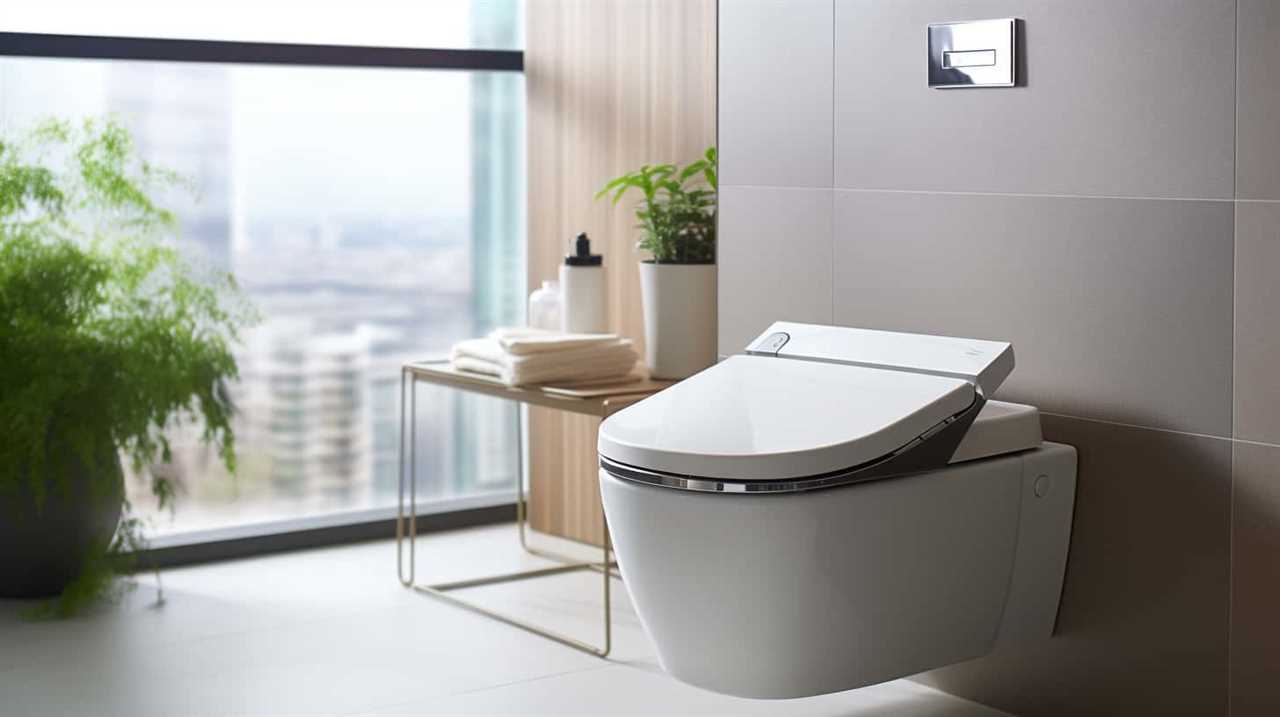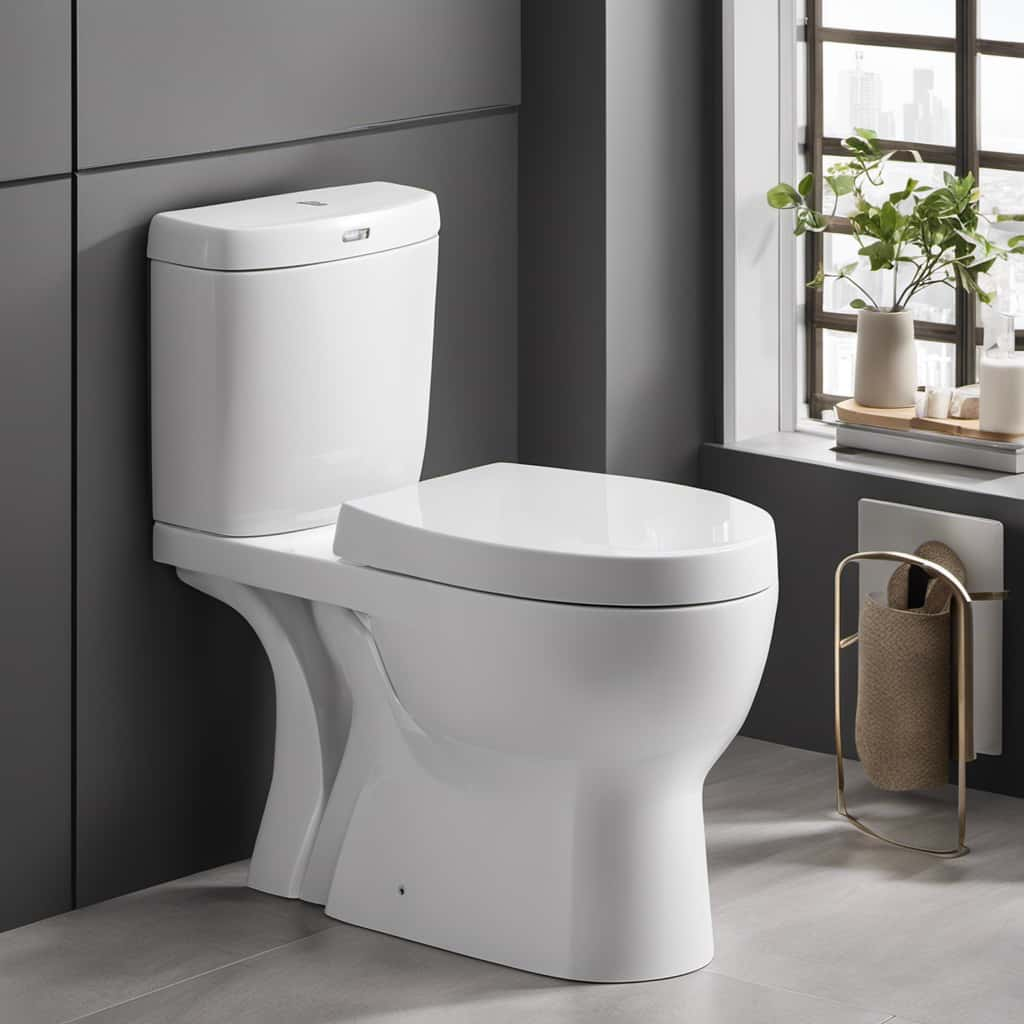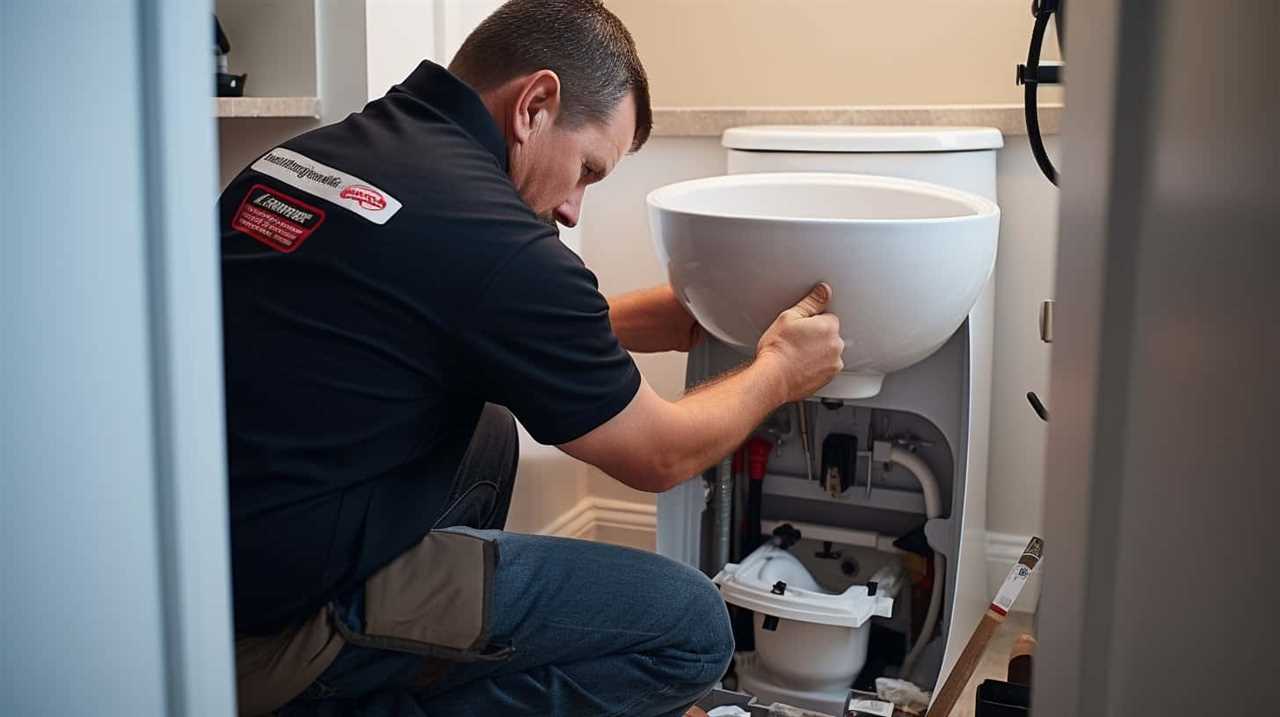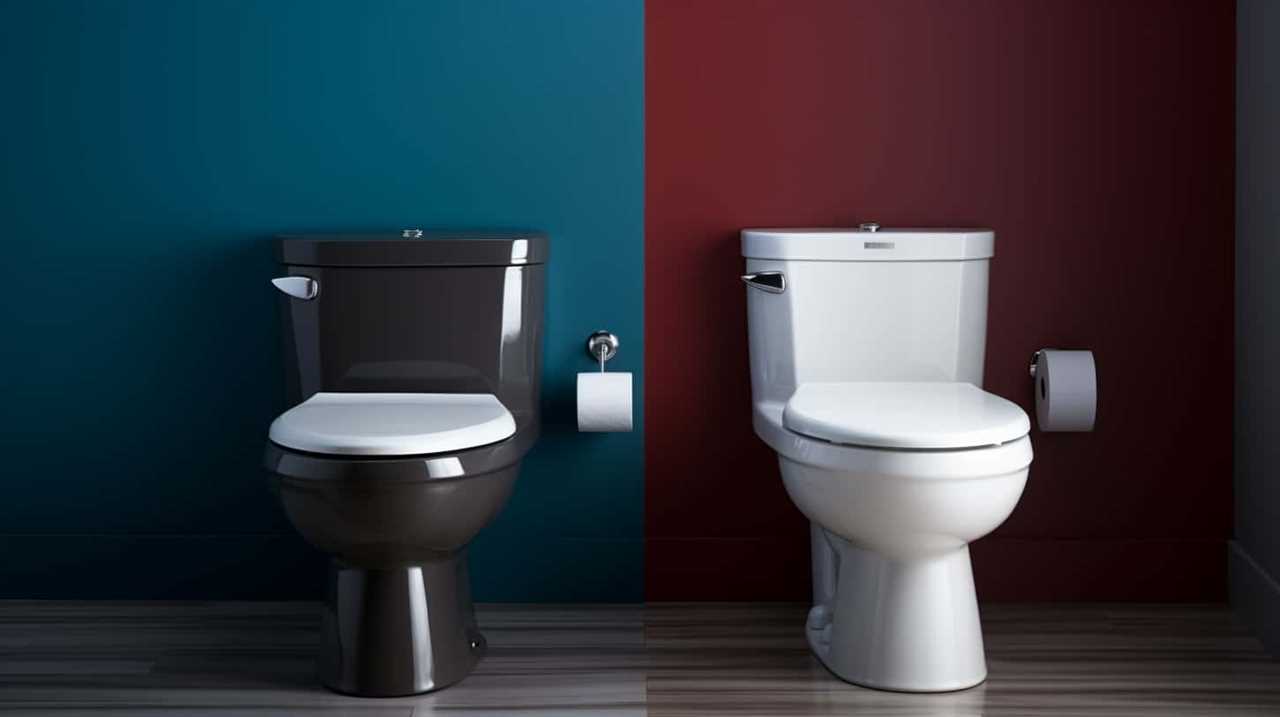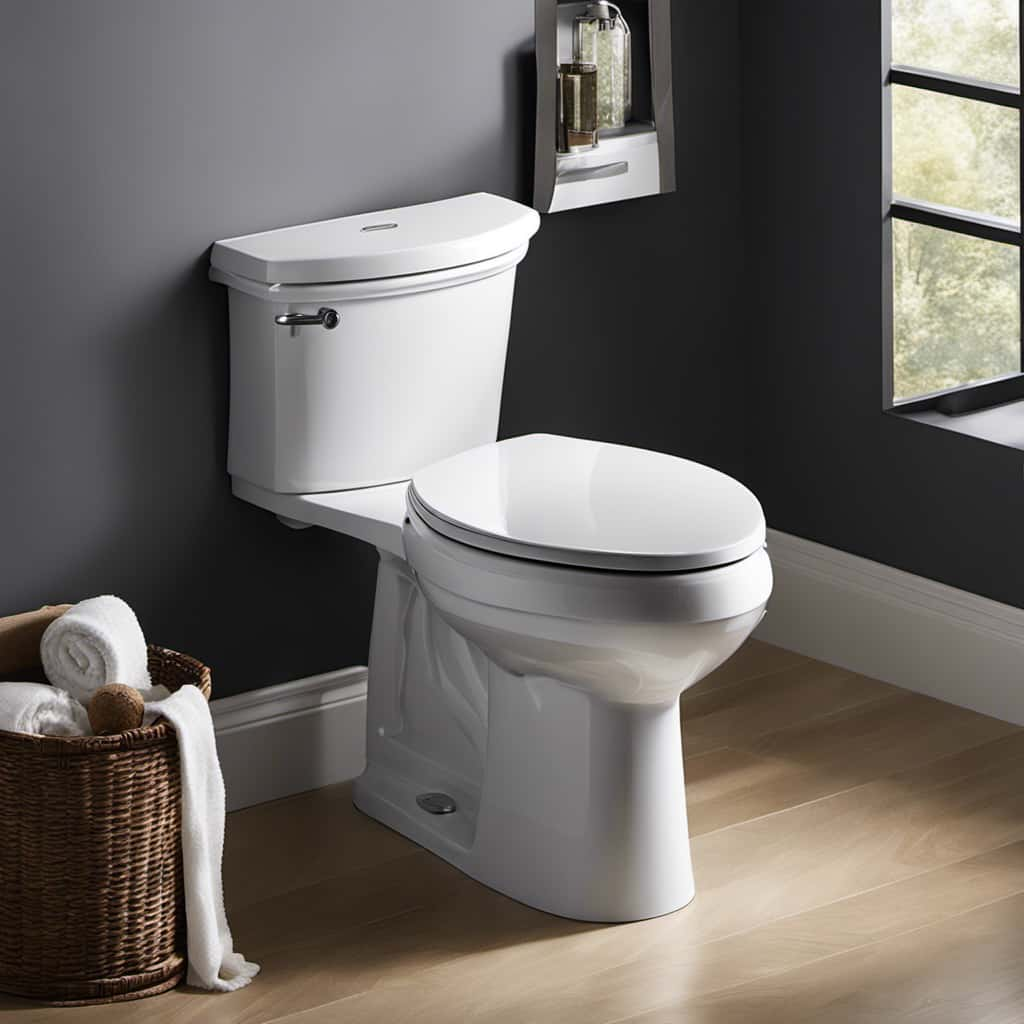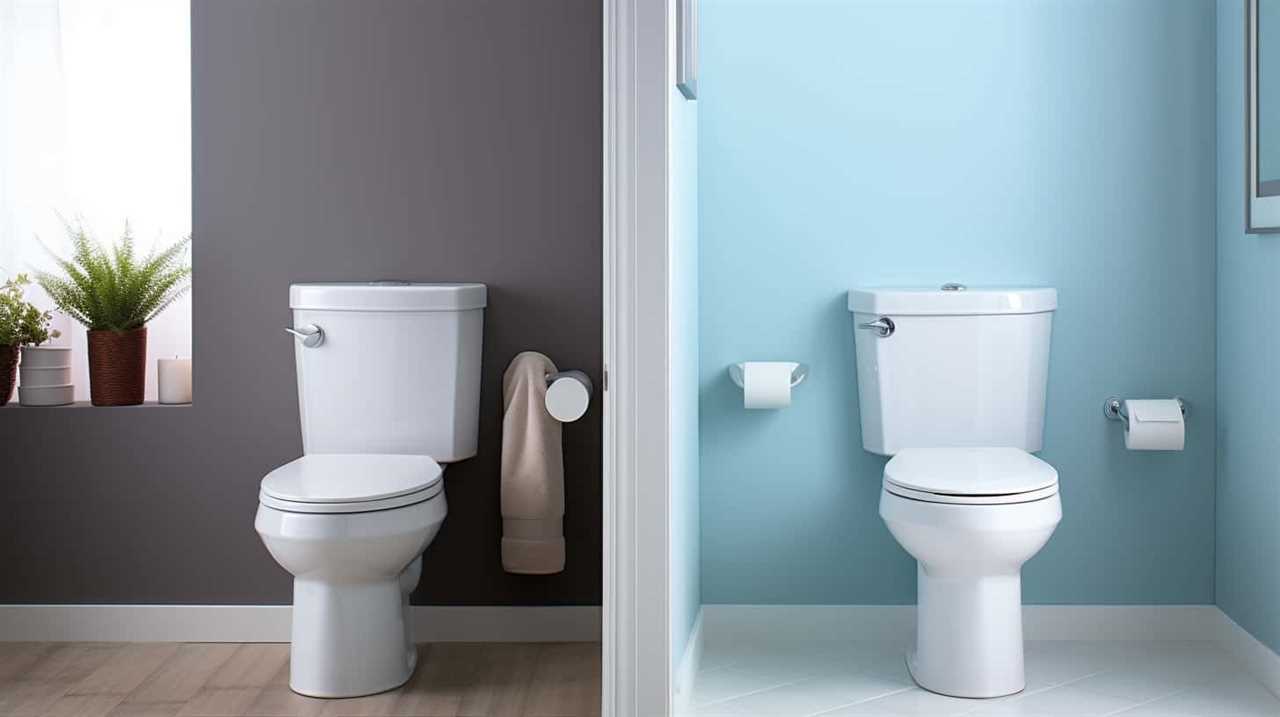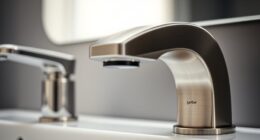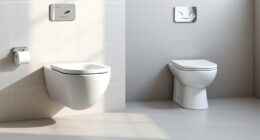Did you know that a clogged toilet is one of the most common household plumbing issues?
Well, fear not! We’re here to share some expert tips on how to unclog a toilet without using a plunger.
In this article, we’ll provide you with natural remedies, tools, and techniques that can help you tackle the problem head-on.
So, if you’re ready to master the art of toilet unclogging, let’s dive in and get started!
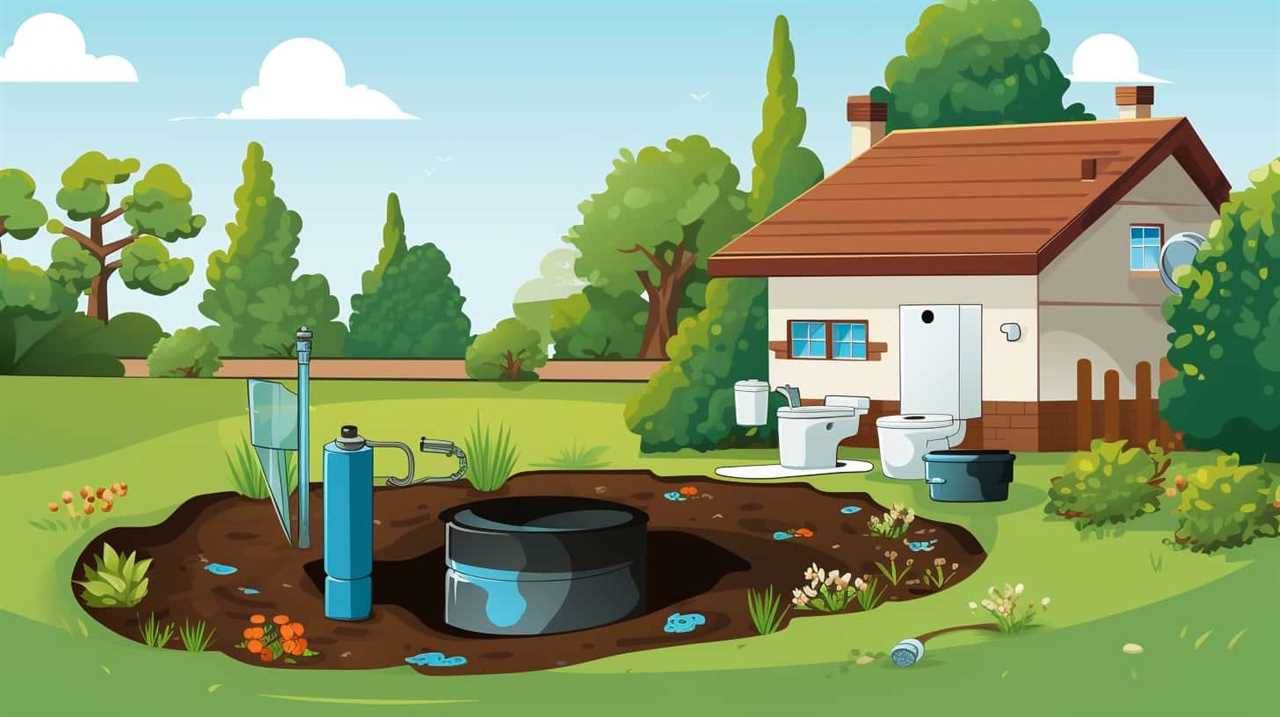
Key Takeaways
- Hot water and dish soap or shampoo can be effective in unclogging a toilet without plunging.
- Using a wire coat hanger or a vinegar and baking soda mixture can also help dislodge the obstruction.
- Tools such as a toilet auger or plumbing snake can be used to break up and remove the clog.
- Proper prevention measures, such as disposing of only toilet paper and performing regular toilet maintenance, can help avoid toilet clogs.
Quick Fixes for Unclogging a Toilet
We have found several quick fixes that can unclog a toilet without using a plunger. Toilet clog prevention is essential to maintain a smoothly functioning bathroom.
One effective method is to create a homemade toilet unclogging solution using common household ingredients. Start by pouring hot water into the toilet bowl, followed by dish soap or shampoo. The hot water helps to break down the clog, while the soap acts as a lubricant. Allow the solution to sit for a few minutes before flushing.
Another method involves using a wire coat hanger to manually dislodge the obstruction. Straighten the hanger and create a hook at one end, then carefully insert it into the toilet drain and maneuver it to remove the clog. Remember to handle the wire hanger with caution to avoid any injuries.
These simple, yet effective, homemade toilet unclogging methods can save you from the hassle of using a plunger.
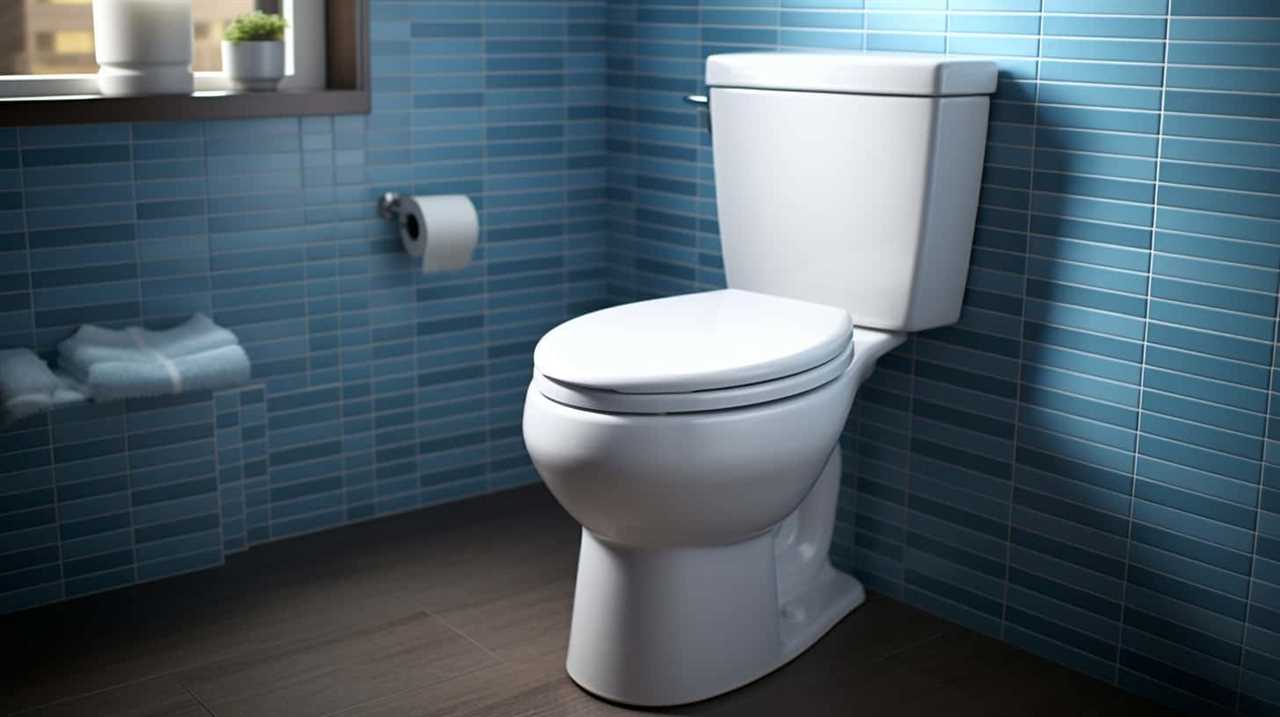
Natural Remedies for Toilet Clogs
One effective natural remedy for toilet clogs is to use a vinegar and baking soda mixture. This DIY alternative for unclogging toilets is a homemade solution for stubborn toilet clogs. To use this method, start by pouring one cup of baking soda into the toilet bowl. Follow this with two cups of vinegar, which will create a foaming reaction. Allow the mixture to sit for about 30 minutes, allowing it to break down the clog. Afterward, flush the toilet and check if the clog has been resolved. If necessary, repeat the process. It’s important to note that this method may not work for every type of clog, especially if it’s caused by a more severe blockage. In such cases, it’s best to contact a professional plumber for assistance.
| Pros | Cons |
|---|---|
| Inexpensive | May not work for severe clogs |
| Environmentally friendly | Requires time for the mixture to work |
| Easy to use | May need multiple attempts |
| Safe for plumbing systems | May not be effective for all types of clogs |
| Can be done with readily available household items |
Tools and Techniques for Unclogging a Toilet
To effectively unclog a toilet without plunging, we can utilize various tools and techniques.
One effective tool is a toilet auger, also known as a plumbing snake. This long, flexible metal cable is inserted into the toilet drain and rotated to break up and remove the clog. Toilet augers are designed specifically for toilets and have a protective coating to prevent scratching the porcelain.
Another option is chemical drain cleaners, which can dissolve organic matter causing the blockage. However, it’s important to use these products with caution and follow the instructions carefully to avoid damaging the toilet or harming yourself. Remember to always wear protective gloves and eyewear when using chemical drain cleaners.
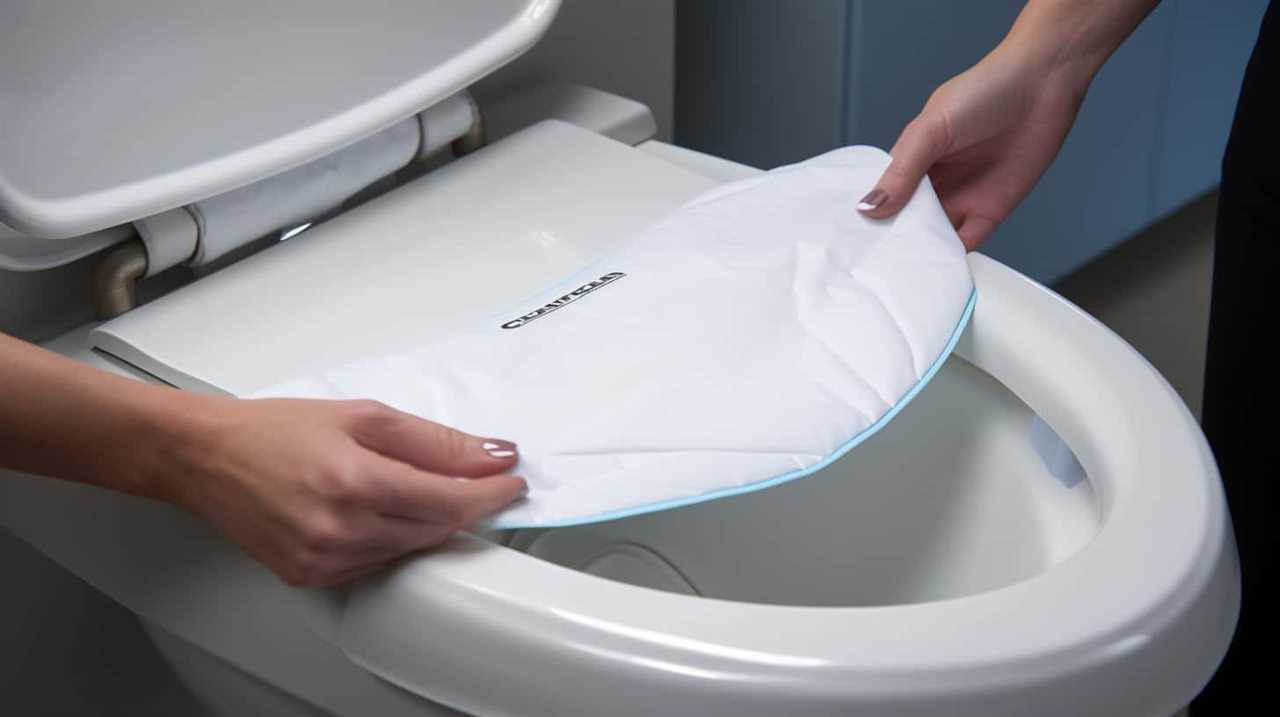
These tools and techniques can help you unclog a toilet effectively without the need for plunging.
Prevention Tips to Avoid Toilet Clogs
To prevent toilet clogs, it’s important to be mindful of what we flush down the toilet. Here are some prevention tips to help you avoid those frustrating clogs:
- Proper disposal: Only flush toilet paper and human waste. Avoid flushing items like wipes, feminine hygiene products, or paper towels, which can easily cause blockages.
- Regular maintenance: Perform routine toilet maintenance, such as checking for any leaks or cracks in the bowl or tank. Also, ensure that the flushing mechanism is in good working condition.
- Water pressure: If you have low water pressure, it can contribute to clogs. Consider installing a pressure-assisted toilet or using a toilet flush enhancer to improve water flow.
- Drain covers: Install drain covers or screens to catch hair, debris, and other particles that could potentially clog the toilet drain.
- Educate household members: Teach everyone in your household about proper toilet use and what should and shouldn’t be flushed.
By following these prevention tips, you can significantly reduce the chances of experiencing toilet clogs.
However, if you do encounter a stubborn clog, it might be time to call a professional for assistance.
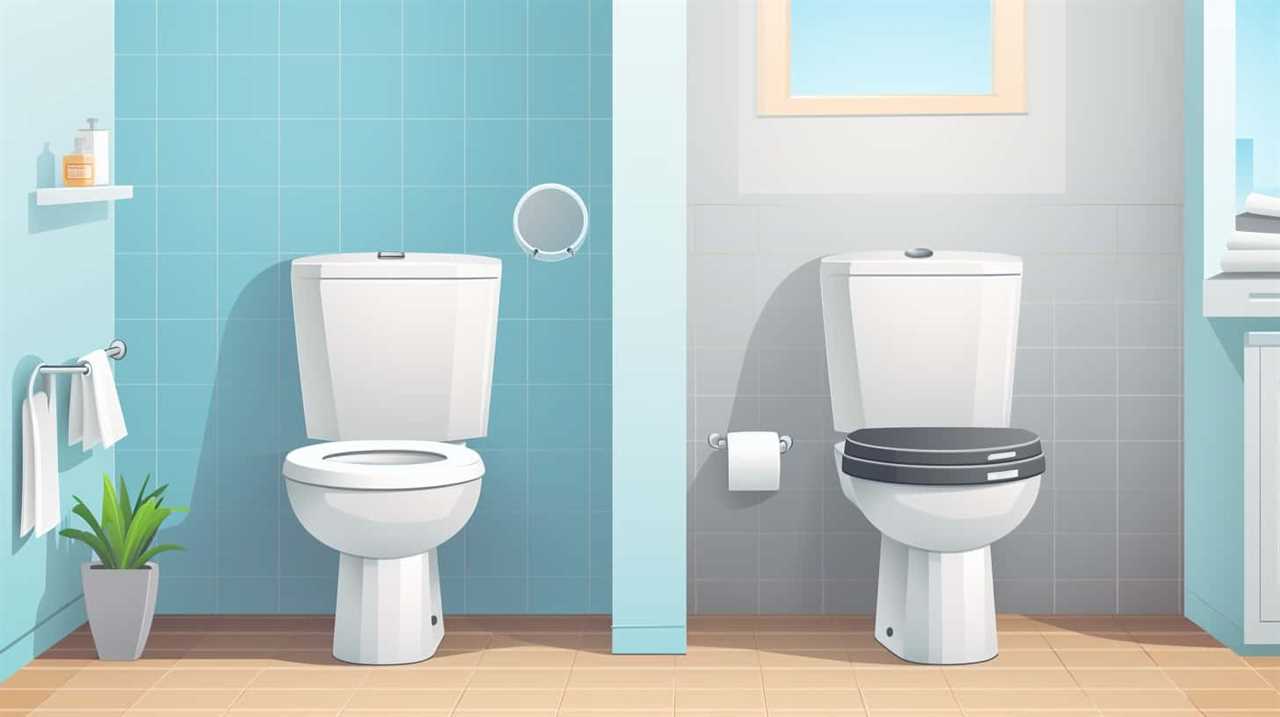
When to Call a Professional for Toilet Clogs
If you encounter a stubborn clog that can’t be resolved with basic unclogging methods, it may be necessary for us to call a professional for assistance. While many toilet clogs can be easily resolved through DIY methods, there are certain circumstances where it’s advisable to seek professional help.
One sign of a serious toilet clog is if multiple attempts to unclog the toilet have failed. This could indicate a more complex issue, such as a blockage in the main sewer line. Another sign is if you notice water backing up into other drains or toilets in your home. This could indicate a larger plumbing issue that requires professional intervention.
Additionally, if you’re unsure of the cause of the clog or if you suspect a foreign object may be lodged in the toilet, it’s best to consult a professional plumber who’s the expertise and tools to safely and effectively resolve the problem.
Frequently Asked Questions
How Can I Prevent Toilet Clogs in the First Place?
Preventive measures are crucial to avoid toilet clogs. Understanding common causes such as excessive toilet paper, flushing non-flushable items, or faulty plumbing can help us take proactive steps to maintain a clog-free toilet.
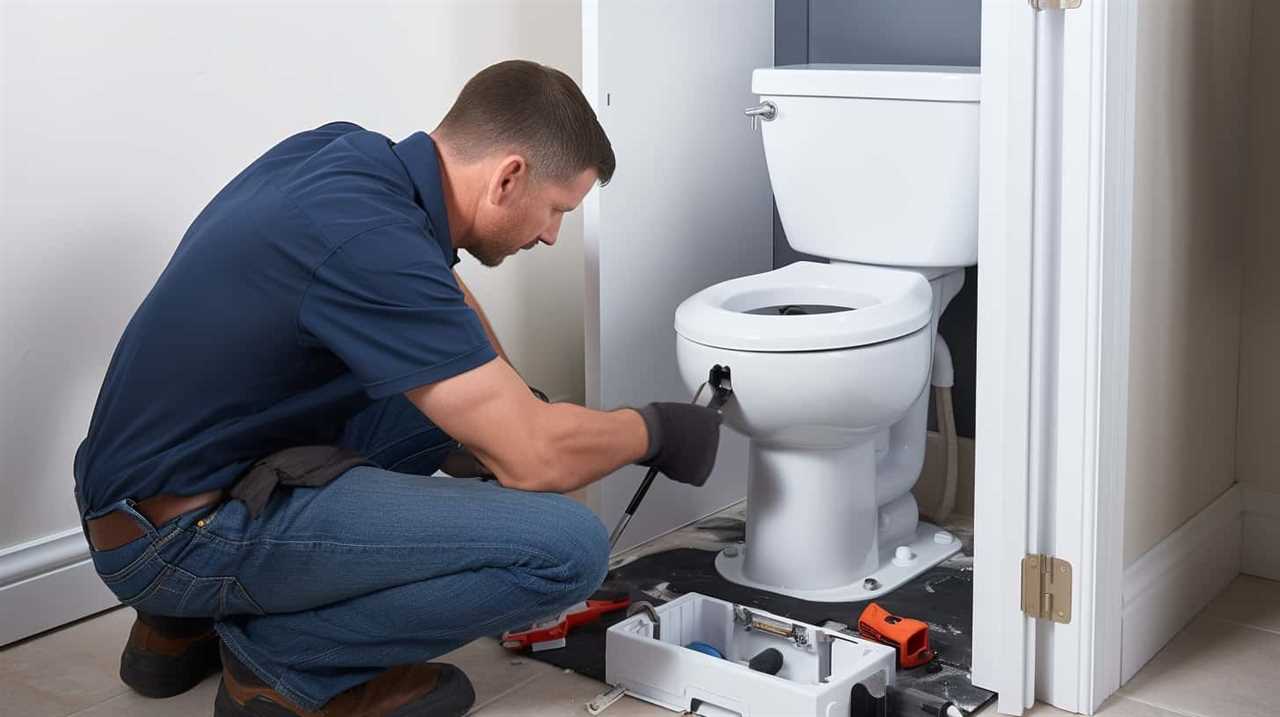
Are There Any Natural Remedies for Toilet Clogs That I Can Try Before Resorting to Harsh Chemicals?
There are alternative solutions and natural remedies that can be tried before resorting to harsh chemicals to unclog a toilet. These options can be effective and are worth considering.
Can I Use a Plunger as a Last Resort if the Quick Fixes and Natural Remedies Didn’t Work?
Yes, a plunger can be used as a last resort if other methods fail. However, using a snake tool for unclogging toilets is often more effective. Another option is using a plunger with hot water.
Are There Any Specialized Tools or Techniques That Professionals Use for Unclogging Toilets?
Yes, there are specialized equipment and professional techniques used by experts to unclog toilets. These tools include augers and sewer snakes, while techniques such as hydro jetting and drain camera inspections are commonly employed.
How Do I Know When It’s Time to Call a Professional for a Toilet Clog That I Can’t Handle Myself?
When should we call a professional for a seriously clogged toilet? What are the signs? It’s crucial to hire a plumber if the clog persists, there’s sewage backup, or if DIY methods fail. Don’t wait for a messy disaster!
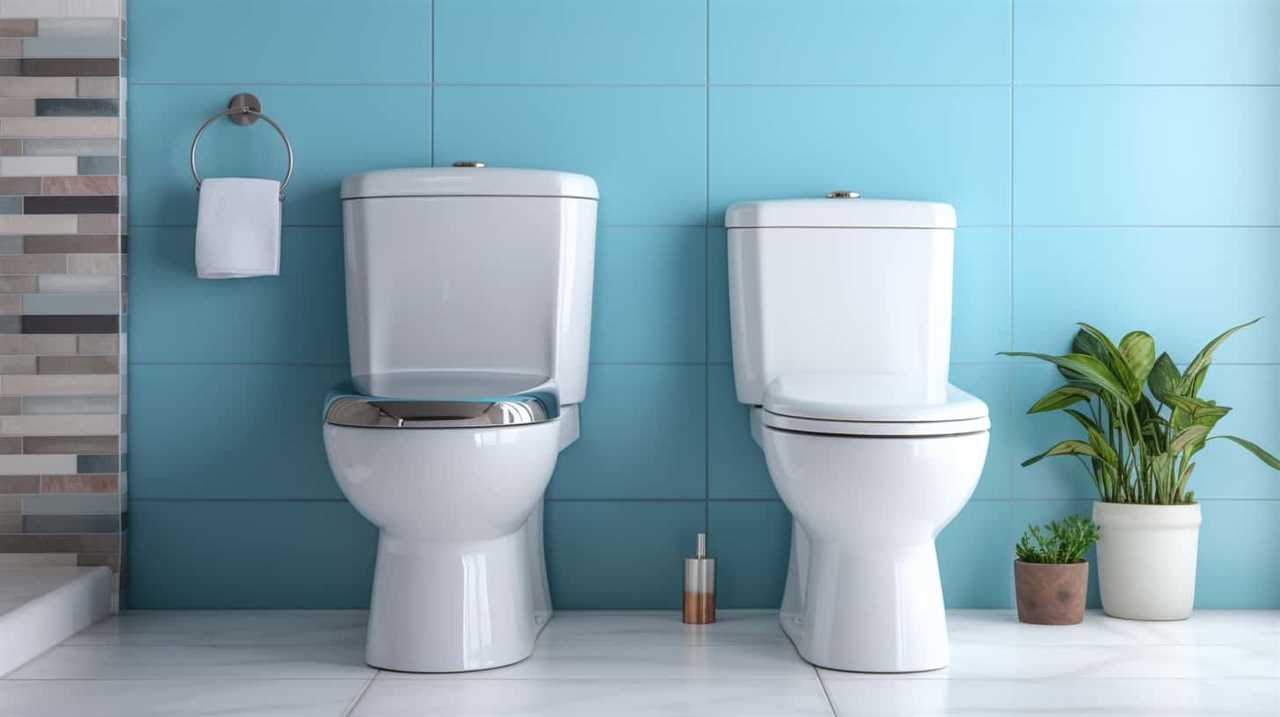
Conclusion
In conclusion, while there are several quick fixes and natural remedies for unclogging a toilet, it’s important to have the right tools and techniques on hand.
By following prevention tips and being proactive, you can avoid toilet clogs in the future.
However, if all else fails, it may be necessary to call a professional for assistance.
Don’t wait until it’s too late – take action now to keep your toilet running smoothly.
